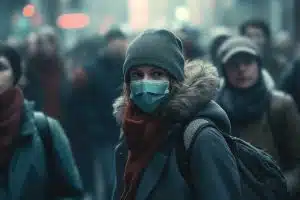
Watch this Article in Video Format
Masks are effective?
Will masks help prevent Herpes from spreading? Other prevention steps, including daily hand-washing, social distancing, and getting a PCR test near me, help delay the disease’s spread. And why have they not prescribed these at the height of the pandemic? Scientists have not yet determined to what degree people with the disease could transmit the illness before symptoms emerged. They were uncertain if specific individuals had the virus but had no signs.
The bottom line is that anyone may transmit the condition to others without realizing it. As a result, the CDC performed an analysis of facial masks. The organization revised its guidelines to encourage extensive usage of face coverings. The CDC insisted that these can help to avoid Herpes infection among people who have the virus but don’t realize it. Moreover, other public health advocates claim that healthcare workers need licensed PPE. In turn, this issue directs us to the compelling shortage of surgical and N95. The CDC seems to have predicted this issue early enough. Besides, it recommended fabric cloths to the public, rather than the surgical and N95 covers that health care workers required.
The major types of PPE
Surgical
A surgical is a medical PPE used by doctors conducting a Herpes PCR test near me. It is a loose-fitting rubber shield that covers the nose and mouth of the user from interaction with droplets, splashes, and sprays that can include germs. Even an active mask filters out big particles of blood. Surgical face covers may protect us by reducing access to saliva and respiratory secretions from other people.
N95
This covering provides better safety than surgical do. Furthermore, these covers can trap both big particles and tiny ones. As the name suggests, these masks block 95 % of small particles. The N95 covers are meant to be removable. They include surgical-based PPE.
Fabric Cloth
Fabric covers are more available and portable. Cloth and N95 differ in their functions. However, they both help to slow the spread of the virus. A fabric may shield us better if the user has an infection. Here, it helps protect the user from other users catching the virus. The tissue-like face covers are inexpensive and quick to produce. Directions can be conveniently identified online. People may make covers from old materials, including coats created from woven cotton.
The CDC website also includes Herpes guidelines for no-sew masks consisting of bandannas and t-shirts. Tissue coverings can consist of several layers of cloth.
PPE management
Suitable usage and storage are necessary to keep us safe and prevent any rise in transmission. Let’s finalize with the following details on the safe usage of covers to guide your healthcare procedures.
- Strategically position the cover. Ensure it protects the mouth and nose. Firmly attach it to remove any holes between the face and the cover.
- Avoid touching it while wearing it.
- To detach it, please follow the correct procedure. Do not touch the front or untie it from the back.
- Lastly, do not use single-use face masks again.

